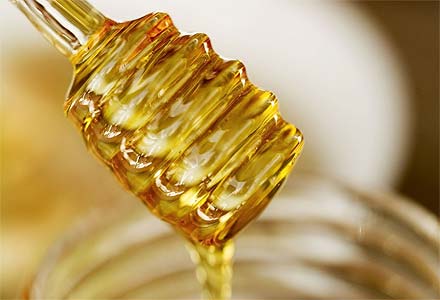Sunlight for Psoriasis
There are good days and there are bad days, and if you're troubled with psoriasis, you know the difference all too well. On the good days, you hardly need to pay attention to what your skin's doing. On the bad ones, red itchy patches are crying for attention. here are ways to make good days better and the bad more bearable.
See the Light
Sunlight is an excellent remedy for psoriasis. Every day, spend 15 to 30 minutes in the sun, and you should see results in less than six weeks. While doctors don't have the full explanation, research shows that sunlight decreases the activity of the skin's T cells. These specialized cells produce substances called cytokines, which initiate a cycle of inflammation. When you expose T cells to sunlight, it quells their action, breaking the cycle.
Protect yourself from burning by wearing sunscreen with an SPF of at least 15 on healthy areas of skin.
Go Skin Dipping
- Take a good, long soak in warm water…then add some vegetable oil. Here's why: A long bath can soften scaly patches and soothe itching, but bathing can also dry your skin and make itching worse. So sit in the tub about 10 minutes, letting your skin get thoroughly soaked, but about 5 minutes before you get out, add a few spoonfuls of vegetable oil. That's all it takes to seal the water into your skin. )Be careful getting out of the tub, because oil makes the tub slippery.)
- To relieve itching, try a cool-water bath, adding vinegar to the bath water. Many people find that vinegar helps psoriasis, even though doctors aren't sure why. What's known is that acetic acid in vinegar kills bacteria-and one theory holds that psoriasis is made worse by bacteria.
- Fine-ground oatmeal is another good ingredient for itch relief relief . You can sprinkle in an oatmeal product specially made for bathing, such as Aveeno. Or put unflavored oatmeal in a blender, grind it until it turns into a fine powder, then sprinkle it in the water.
Don Another Layer
- After bathing, spread on a moisturizing cream to lock in your skin's natural moisture. Make sure to add a thick layer to psoriasis patches. This helps prevent cracking. Avoid liquid lotions, which dry up too quickly, and instead choose a heavy cream or ointment. Among the best are Lacticare or Amlactin, which contain lactic acid to prevent skin from drying out, or Carmol cream, which contains urea to help loosen scales.
- Try Bag Balm, a product originally designed for use on cow's udders. It's gained a reputation for soothing dry, cracked skin. Look for it in farm-supply stores or pharmacies.
- Try a cream that contains tea-tree-oil into your psoriasis patches several times a day. This Australian remedy is useful for relieving itch and softening psoriasis patches, especially if you have a mild case. However, some people have an allergic reaction to tea-tree oil, so be sure to test on a small patch os skin. Also, the skin covered with tea-tree oil may have increased sensitivity to sunlight.
- To soften the skin and remove scaly patches, you can also use petroleum jelly. Apply it as often as necessary.
Get Oiled
- Mix a tablespoon of flaxseed oil into your cereal, yogurt, or other food each day. This isn't for flavoring-it's for your psoriasis. Flaxseed oil is high in omega-3 fatty acids, and these compounds help to block a chemical in your body called arachidonic acid, which causes inflammation.
- Oily fish are also high in omega-3's. If you like salmon, its a good idea to have it at least once a week. Other fish that are high in omega-3's are sardines and mackerel.
- You can also get these fatty acids by taking 1,000 milligrams of fish oil three times a day. Large amounts of fish oil can "thin" the blood, so check with your doctor first if you're taking a blood thinner such as aspirin , coumadin.
- If you have an aloe vera plant on your shelf, break a stem and apply the gel several times a day to itchy patches of skin. Aloe has anti-inflammatory compounds, and the gel contains magnesium lactate, which helps control itching.
Avoid Getting into Scrapes
Keep your hands off the red spots. Even minor damage to your skin can worsen your psoriasis symptoms. If you pick and scratch the itchy patches, you'll damage your skin, which can lead to more extensive outbreaks.
Always use an electric shaver instead of a razor if you have psoriasis on your legs, face, or other areas where you shave. A sharp razor nicks your skin, no matter how careful you are, which raises your risk of new outbreaks. Shavers are gentler.
The Ticket to Scalp Care
- If you get psoriasis on your scalp, it's time to shop for special shampoo. You want a product that contains salicyclic acid or tar. Effective shampoos (with 2% tar) include Neutrogena T/Gel Extra Strength or DHS Tar. Use daily at first, then twice a week-alternating with regular shampoo-as symptoms subside. When you apply the shampoo, leave it in contact with your scalp for 10 minutes before rinsing.
- Keep a list of several shampoos that you like, Whenever you finish one kind, rotate and choose another. Your scalp may become tolerant to one kind of shampoo that becomes less effective if you use it long-term. People report better results if they switch shampoos.
- Adopt a short hairstyle. With a simple do, it will be a lot easier to treat your scalp.
Simmer Down
Get regular exercise. It's a great stress reducer- and stress is known to contribute to outbreaks. If you can take a 30-minute walk every day, you may be surprised at how effectively that token amount of exercise distracts you from things that are getting you keyed up.
Practice a relaxing mental exercise, such as meditating or deep breathing, a few minutes each day.




